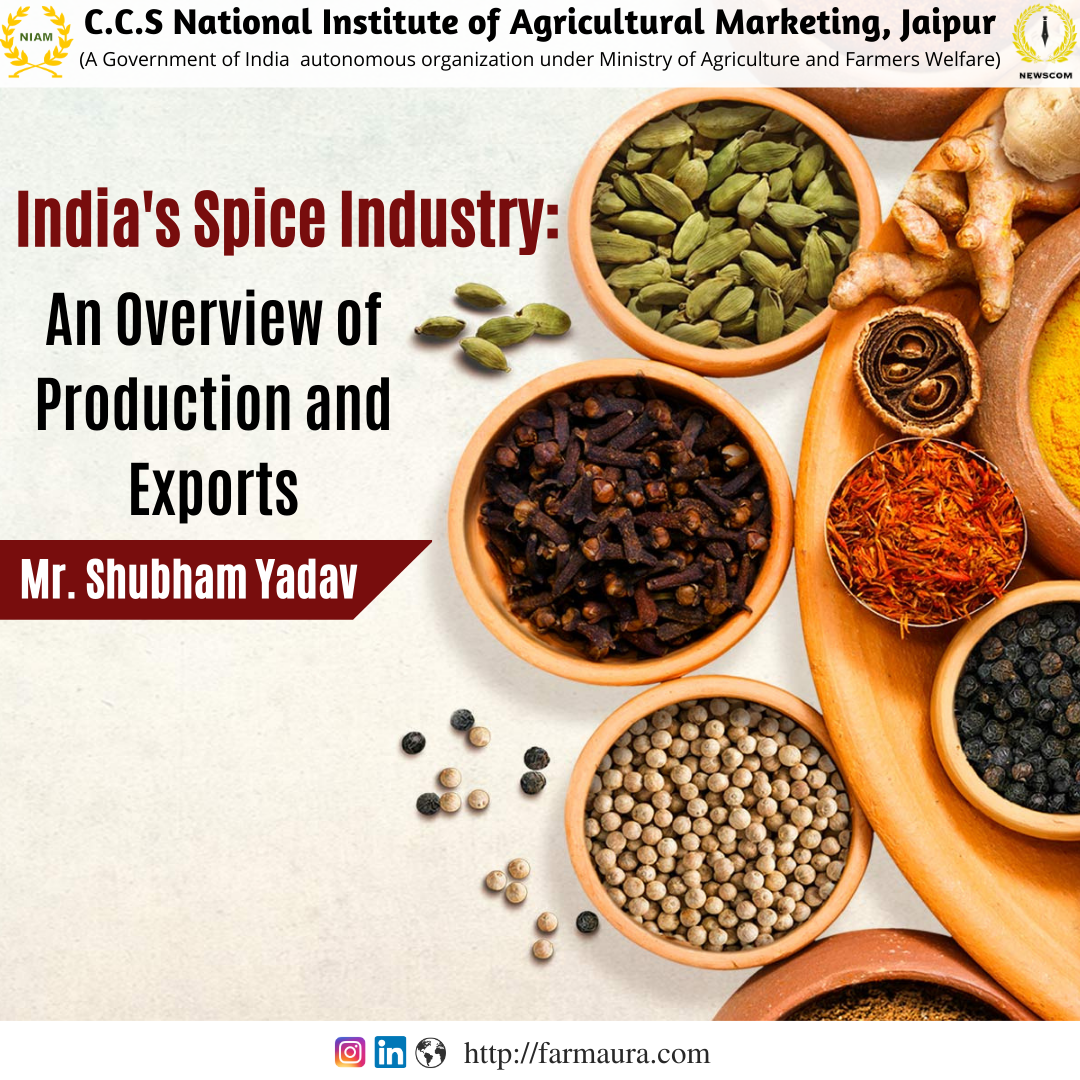India is known for its vast diversity and abundance of spices, making it a leading spice consumer, producer, and exporter worldwide. India produces around 75 out of the 109 varieties recognized by the International Organization for Standardization (ISO). Popular spices grown in India include chilli, pepper, cinnamon, nutmeg, garlic, ginger, cumin, turmeric, coriander, among others. The largest states in India that produce spices are Madhya Pradesh, Rajasthan, Gujarat, Andhra Pradesh, Telangana, Karnataka, Maharashtra, Assam, Orissa, Uttar Pradesh, West Bengal, Tamil Nadu, and Kerala.
In 2021-22, the production of spices in India was 10.88 million tonnes, and the country has a thriving global market for spice exports. India exported spices worth US$ 4,102.29 million, with the market increasing by 30% in volume terms and 13% in value terms. In September 2022, the export of spices from India rose by 6.62% to US$ 330.46 million. During 2021-22, India exported 1.53 million tonnes of spices, and from 2017-18 to 2021-22, the total quantity exported from India grew at a CAGR of 10.47%.
India’s spice exports reach nearly 180 destinations worldwide, with the top export destinations being China, the USA, Bangladesh, Thailand, UAE, Sri Lanka, Malaysia, UK, Indonesia, and Germany. These nine countries accounted for more than 70% of the total export earnings in the fiscal year 2020-21. In terms of value, China imported spices worth Rs. 6,27,155.48 lakhs from India, the USA imported spices worth Rs. 4,65,000.00 lakhs, Bangladesh imported spices worth Rs. 2,51,280.47 lakhs, and the UAE imported spices worth Rs. 1,65,298.53 lakhs. Chilli was the most exported spice from India, with a value of Rs. 858188.59 lakhs.
The spice market has a great potential for growth, with a significant Compound Annual Growth Rate (CAGR). To tap into this potential, the Indian government is emphasizing on the development and promotion of spice exports. The Spice Board of India plays a crucial role in supporting exporters by facilitating the adoption of high-tech processing technologies, improving food standards, and providing various other benefits. These initiatives include infrastructure development, promoting Indian spice brands in foreign markets, setting up infrastructure in major spice-growing centers, promoting organic spices, and special programs for entrepreneurs in the North-Eastern region of India.
The Spice Board of India has launched 8 specific Spice Parks with the aim of facilitating farmers with improved prices and a wider market. The purpose of these parks is to have an integrated operation for cultivation, post-harvesting, processing, value-addition, packaging, and storage of spices and spice products. The common processing facilities, such as cleaning, grading, packing, and steam sterilization, will help farmers to enhance the quality of their produce, resulting in better price realization. The Spice Board has also submitted a project proposal to the State’s cell for setting up a Spice Complex in Sikkim, seeking financial assistance to facilitate and demonstrate common processing and value addition in spices to help farmers and other stakeholders in the state.




